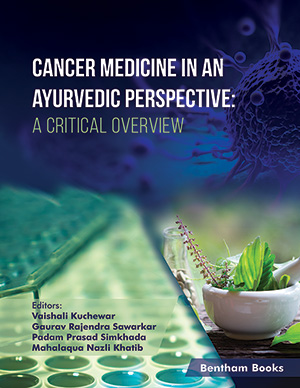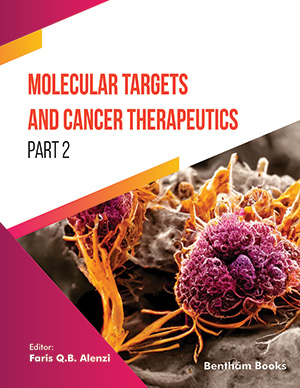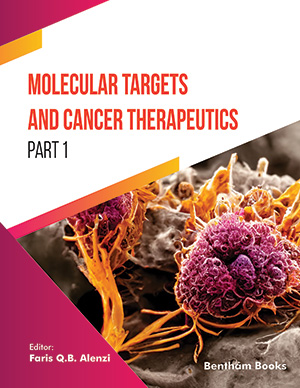Abstract
Background: Chaga mushroom (Inonotus obliquus) is an edible macrofungus used in traditional and folk medicine for the treatment of various gastrointestinal disorders. It has shown potent anti-inflammatory, antioxidant and anticancer effects in several experimental studies, including anti-inflammatory and anticancer effects in colorectal cancer and intestinal inflammation. Whole extract or purified compound ergosterol peroxide from chaga mushroom showed anti-inflammatory mechanism via suppression of NF-κB/iNOS-COX-2 and growth inhibitory mechanism via regulation of apoptosis activation and β-catenin suppression. The diverse inflammatory and carcinogenic agents, like carbon tetrachloride (CCl4), a potent hepatotoxic chemical, cause liver damage by inducing lipid peroxidation and other oxidative damages.
Aims: The study aimed to analyze the biochemical, cellular and molecular mechanisms of CCl4 induced chronic liver inflammation and carcinoma, and to analyze the effect of the extract of chaga mushroom on liver inflammation and cancer by virtue of anti-inflammatory mechanisms.
Method: Physiological, histological and immunohistochemical analyses of the physiological functions and cellular functions were performed. Biochemical assays were conducted for assessing enzymatic changes in tissues. Molecular simulation and docking studies were performed for the evaluation of the molecular interaction.
Results: CCl4-exposed mice exhibited a significant decrease in body weight followed by altered histopathological signatures in the liver. Supplementation of IOAE showed that treatment restored the normal structure of the tissues with large round nuclei in most of the cells. CCl4 caused a steep elevation in the levels of SGOT and SGPT to 2.32- and 1.8-fold as compared to control. The LDH level increased to 447 IU/L in CCl4 treated mice as compared to control (236 IU/L). Analysis of the oxidant enzyme pathway showed that CCl4 reduced the GSH level to 16.5 μM as compared to control (52 μM), and induced the catalase enzyme activity up to 259 U/mL as compared to control (124 U/L). These physiological and biochemical alterations were restored towards normal levels by IOAE administration. Immunohistochemical staining for caspase-3 and p53 showed that CCl4 notably increased their expressions, which were subsequently suppressed by administration of IOAE. The molecular simulation and docking studies using ergosterol peroxide from chaga mushroom with iNOS, COX-2 and TNF-α showed binding energy of -10.5, -8.9 and -9.1 Kcal/mol, respectively. These proteins interacting with ergosterol peroxide exerted an inhibitory effect on these critical proinflammatory signaling proteins.
Conclusion: The results point out that IOAE is able to prevent damage of hepatic cells caused by CCl4 in mouse models through anti-inflammatory and growth inhibitory mechanisms, which can be utilized for natural prevention of liver toxicity.
Keywords: Chaga mushroom, carbon tetrachloride, hepatotoxicity, antiinflammation, antioxidant, immunohistochemicalanalysis.
[http://dx.doi.org/10.1038/modpathol.3880119] [PMID: 10874674]
[http://dx.doi.org/10.1017/S1462399411002110] [PMID: 22306029]
[http://dx.doi.org/10.3109/13880209.2011.570766] [PMID: 22014261]
[http://dx.doi.org/10.1080/713611034] [PMID: 12708612]
[http://dx.doi.org/10.1016/0163-7258(89)90050-8] [PMID: 2675128]
[http://dx.doi.org/10.3389/fcell.2020.571676] [PMID: 33585438]
[http://dx.doi.org/10.2174/1871520620666200619164947] [PMID: 32560616]
[http://dx.doi.org/10.18632/oncotarget.19887] [PMID: 29029506]
[http://dx.doi.org/10.1158/1940-6207.CAPR-17-0046] [PMID: 28465362]
[http://dx.doi.org/10.18632/oncotarget.8898] [PMID: 27120805]
[http://dx.doi.org/10.1016/j.ejphar.2013.09.042] [PMID: 24076327]
[http://dx.doi.org/10.1002/iub.1598] [PMID: 28112475]
[http://dx.doi.org/10.1002/jcb.26388] [PMID: 28857294]
[http://dx.doi.org/10.1007/s11094-006-0194-4]
[http://dx.doi.org/10.1615/IntJMedMushrooms.v1.i1.30]
[http://dx.doi.org/10.1615/IntJMedMushrooms.v17.i2.10] [PMID: 25746615]
[http://dx.doi.org/10.1007/s00253-002-1076-7] [PMID: 12436306]
[http://dx.doi.org/10.1016/j.compbiolchem.2017.01.004] [PMID: 28160639]
[http://dx.doi.org/10.1177/1721727X1301100306]
[http://dx.doi.org/10.1016/j.jep.2012.07.008] [PMID: 22819687]
[http://dx.doi.org/10.1016/j.jep.2015.07.030] [PMID: 26210065]
[http://dx.doi.org/10.1021/bi026313j] [PMID: 12437348]
[http://dx.doi.org/10.1038/384644a0] [PMID: 8967954]
[http://dx.doi.org/10.1126/science.1116304] [PMID: 16284179]
[http://dx.doi.org/10.1016/j.sjbs.2012.03.004] [PMID: 23961190]
[http://dx.doi.org/10.1002/hep.28392] [PMID: 26663351]
[http://dx.doi.org/10.1016/j.jep.2011.11.033] [PMID: 22138659]
[http://dx.doi.org/10.1016/j.fct.2008.07.027] [PMID: 18761048]
[http://dx.doi.org/10.3390/molecules200813518] [PMID: 26213907]
[http://dx.doi.org/10.1016/j.jep.2008.02.010] [PMID: 18358653]
[http://dx.doi.org/10.1016/j.cbi.2010.03.013] [PMID: 20227401]
[http://dx.doi.org/10.1371/journal.pone.0196411] [PMID: 29709010]
[http://dx.doi.org/10.1021/jf0209701] [PMID: 12617586]
[http://dx.doi.org/10.1016/j.jhep.2004.11.043] [PMID: 15763341]
[PMID: 10221307]
[http://dx.doi.org/10.1111/j.1478-3231.2006.01304.x] [PMID: 16911467]
[http://dx.doi.org/10.1615/IntJMedMushrooms.v17.i11.70] [PMID: 26853962]
[http://dx.doi.org/10.3892/etm.2011.197] [PMID: 22977488]
[http://dx.doi.org/10.1155/2016/7196280] [PMID: 27314036]
[http://dx.doi.org/10.3389/fnins.2015.00022] [PMID: 25774123]
[PMID: 14528681]
[http://dx.doi.org/10.1007/BF02977344] [PMID: 16114493]
[http://dx.doi.org/10.1539/joh.49.249] [PMID: 17690517]
[http://dx.doi.org/10.1016/j.tox.2007.11.021] [PMID: 18291570]
[http://dx.doi.org/10.1111/j.1530-0277.2002.tb02621.x] [PMID: 12068261]
[http://dx.doi.org/10.1007/s00534-002-0824-5] [PMID: 14598152]
[http://dx.doi.org/10.1016/S0300-483X(01)00473-5] [PMID: 11718950]
[http://dx.doi.org/10.1016/S0925-4439(00)00098-3] [PMID: 11342007]
[http://dx.doi.org/10.3109/13880209.2014.909502] [PMID: 25243876]
[http://dx.doi.org/10.1016/j.biopha.2017.07.101] [PMID: 28763751]
[http://dx.doi.org/10.1016/S0002-9440(10)65594-0] [PMID: 9708811]
[http://dx.doi.org/10.1002/iub.1895] [PMID: 30321484]
[http://dx.doi.org/10.1038/nature15212] [PMID: 26331537]
[http://dx.doi.org/10.18632/oncotarget.7864] [PMID: 26943586]
[http://dx.doi.org/10.1016/j.foodchem.2008.06.075]
[http://dx.doi.org/10.18632/oncotarget.8608] [PMID: 27058618]
[http://dx.doi.org/10.2174/138161207782360627] [PMID: 18045183]
[http://dx.doi.org/10.1111/j.1872-034X.2008.00379.x] [PMID: 18705763]
[http://dx.doi.org/10.1006/taap.2001.9304] [PMID: 11740910]
[http://dx.doi.org/10.1053/j.gastro.2010.01.058] [PMID: 20420949]
[http://dx.doi.org/10.1136/gut.2004.060079] [PMID: 16099799]
[http://dx.doi.org/10.1007/s10555-007-9096-5] [PMID: 17763971]
[http://dx.doi.org/10.1038/cmi.2009.43] [PMID: 19887045]
[http://dx.doi.org/10.1016/S0027-5107(01)00183-X] [PMID: 11506818]
[http://dx.doi.org/10.1002/ptr.2836] [PMID: 19367670]
[http://dx.doi.org/10.1002/biof.5520310306] [PMID: 18997282]
[http://dx.doi.org/10.1021/np200001x] [PMID: 21428416]
[http://dx.doi.org/10.1016/j.lfs.2005.12.047] [PMID: 16458328]

























